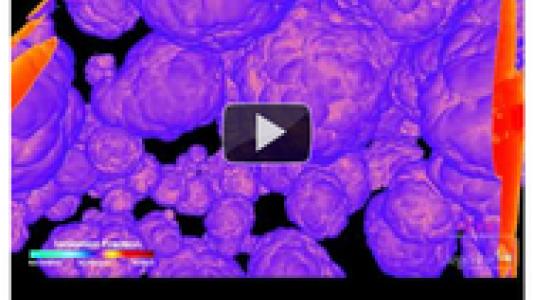
Essentially, the visualizations depict the formation of the first galaxies, and what happened to the surrounding intergalactic gas when they lit up.
“The light from early galaxies had a dramatic impact on the gasses filling the universe. This video highlights the spatial structure of the light’s effect, by comparing two simulations: one with a self-consistent radiation field (RHD), and one without (HD). The comparison shown is the relative difference of the density. The colors show whether the density is greater in radiative or non-radiative case.”
The simulation was run on 50,000 cores of the Jaguar supercomputer at ORNL and consumed over 20 million CPU hours to date. These are some stunning visualizations, folks. Be sure to check out the videos below in full HD resolution.
- The comparison shown is the relative difference of the ionization fraction. The colors show whether the ionization fraction is greater in radiative or non-radiative case.
- The comparison shown is the relative difference of the density. The colors show whether the density is greater in radiative or non-radiative case.
- The comparison shown is the relative difference of the temperature. The colors show whether the temperature is greater in radiative or non-radiative case.
Credits:
Science: Robert Harkness, Rick Wagner, Michael Norman, SDSC; Daniel R. Reynolds, Southern Methodist University
Visualization: Mark Hereld, Joseph A. Insley, Michael E. Papka, Venkatram Vishwanath, Argonne National Laboratory